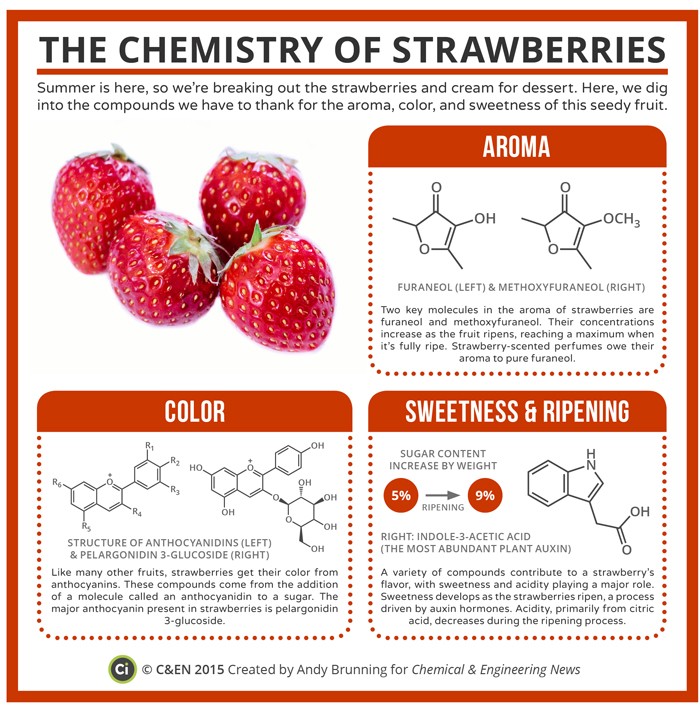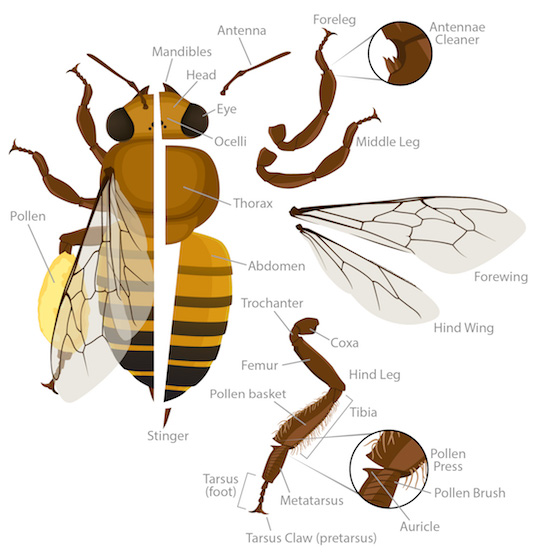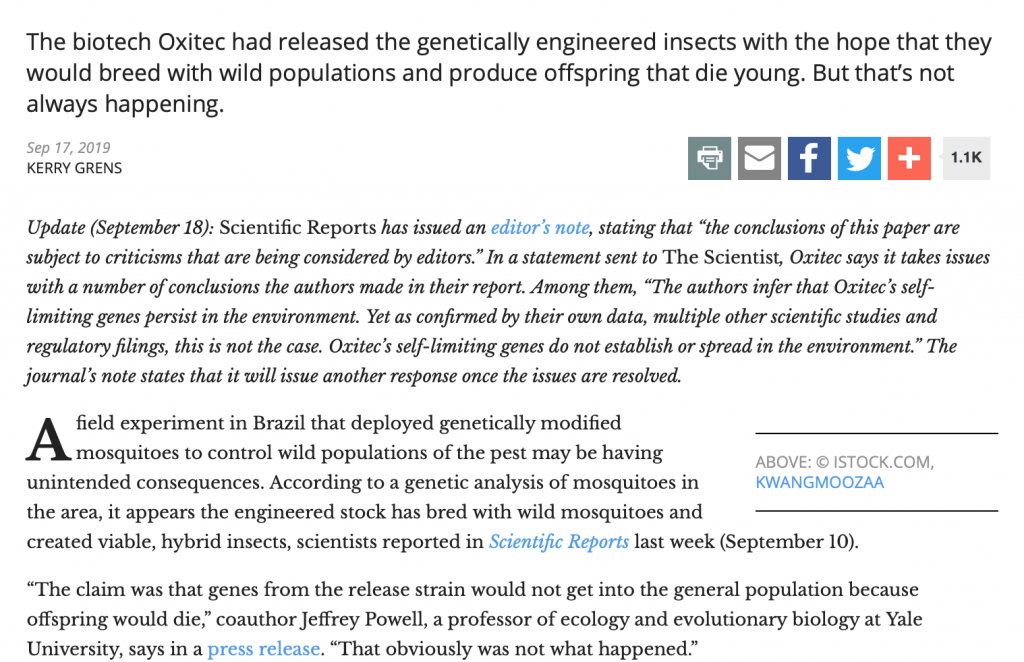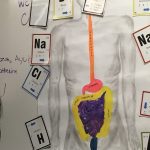Lab #1:
DNA Extraction lab: learn how to extract DNA from a plant
DNA-extraction-from-strawberries_Written Instructions
Link Learn Genetics: How to extract DNA from anything living
REVIEW ACTIVITY: PARTS OF THE CELL
Lab 1A: Karyotype_Genetic Counselling
Chromosome Map_National Library of Medicine
What are chromosomes & how do we use them?
Lab #2: DNA to protein
In this lab you will learn how:
-
The arrangement of DNA building blocks in a gene specifies the order of amino acids in theprotein it codes for.
-
Amino acids are the building blocks of proteins.
-
The sequence of amino acids in a protein determines its structure and function.
-
Living things make proteins the same way.
Paper Transcription & Translation
Student Instructions
Paper Transcription and translation_Student Protein Page
Missed the Lab: DNA to RNA to Protein Total = X/10
PAPER TRANSCRIPTION: STUDENT CUT OUTS
Interactive Review Video: Transcription and Translation (Learn Genetics U of Utah)_Click to Start
Student Copy – Lab Review Sheet
Learn more about how ribosomes assist in protein production:
Learn More about Golgi Apparatus:
Lab #3 :
Option #1: Bees – Learn more about honey bee genetics
Mutations in Honey Bees – Learn more about how mutations occur in insects
The Effects of Fungicides on Bumble Bee Colonies:
Pre-lab: Learn more about honey bee anatomy
Learn more about bumblebee heads
Learn more about bees and bee genomes – listen
Marla Spivik – “Why Bees are disappearing” Bee Lab Ted Talk
Option #2: Mosquitoes – Learn more about the DNA of mosquitoes and disease transmission
Student Lab Sheet: Lab Activity #1 Mosquito Mutations
Student Lab Sheet: Mosquito Building Activity “Lost In Translation”
Mosquito Proboscis – Learn more about how mosquitoes are able to saw through the skin to suck blood
Lab #4: Evolution in Action”Natural Selection and the Rock Pocket Mouse”
Lab #5: Zika Virus
Pre-Lab (Zika in a Minute)
Pre-Lab: Learn how to read a scientific article
Pre-lab: Read the PLOSable Story about “Hungry Mosquito Habits” –
Pre-Lab: Read the PLOSable Story about “Glow in the Dark Plants”
Prepare an annotated bibliography for the two stories. Please use the Cornell Template for your annotation.
Post -lab Discussion – have modified GMO mosquitoes survived?
Lab #6:
The Ethics of Gene Editing
Editing Human Genes is restricted in Canada. Under the Assisted Human Reproduction Act of 2004, editing the Human Genome is punishable by up to 10 years in prison.
Pre-Lab: Learn more about the Laws Governing Human Gene Editing in Canada
Lab #7
Color Vision Genetics Evolution Simulation
Prelab: Learn more about color vision in primates
Learn More about the Evolution of the Human Eye:
Review the Color Vision Activity in Primates:
Lab Sheet – Simulation of Colour Vision
Lab #8
Polymorphism and Genetic Drift in a Population of Bears
Learn more about
- polymorphism, in this case, variation in a phenotypic feature (bear colour)
- the action of selection pressures
- adaptation of populations through natural selection
- genetic drift through chance occurrences
- variation in the environment leading to balanced polymorphism and possibly allopatric speciation
Pre-Lab Activity: Complete to Learn more about how polymorphism, selection pressure, and genetic drift can shape a population
Article Summary:
Abstract
The Kermode bear is a white phase of the North American black bear that occurs in low to moderate frequency on British Columbia’s mid-coast. To investigate the genetic uniqueness of populations containing the white phase, and to ascertain levels of gene flow among populations, we surveyed 10 highly polymorphic microsatellite loci, assayed from trapped bear hairs. A total of 216 unique bear genotypes, 18 of which were white, was sampled among 12 localities. Island populations, where Kermodes are most frequent, show ≈ 4% less diversity than mainland populations, and the island richest in white bears (Gribbell) exhibited substantial genetic isolation, with a mean pairwise FST of 0.14 with other localities. Among all localities, FST for the molecular variant underlying the coat- colour difference (A893G) was 0.223, which falls into the 95th percentile of the distribution of FST values among microsatellite alleles, suggestive of greater differentiation for coat colour than expected under neutrality. Control-region sequences confirm that Kermode bears are part of a coastal or western lineage of black bears whose existence predates the Wisconsin glaciation, but microsatellite variation gave no evidence of past population expansion. We conclude that Kermodism was established and is maintained in populations by a combination of genetic isolation and somewhat reduced population sizes in insular habitat, with the possible contribution of selective pressure and/or nonrandom mating.
Learn more about how natural selection and gene flow work:
Learn more about the habitat of the Kermode Bear:
Lab Activity: Rules and Game Sheet
Sc. 10 Unit 1 Genetics Student: Lab #8 Polymorphism in Kermode Bears
Game Rules:
Step 1: Set-up the Game Board
Step 2: Make a set of selection pressures cards
Step 3: Play the Game
Step 4: Complete the Student Activity Sheet after playing the Game
GAME RULES:
1 Select approximately 20 bears of one colour and separate these into a plastic cup, your ‘bear bank’. To start, take ten of your bears and place them on the map in places where you think they are most likely to survive.
2 The first player takes the card from the top of the pile and reads it privately. This player has the option to migrate two of their own bears before reading the card out to the group. The card will describe how a selection pressure impacts on the bears of different colours in different habitats. Bears may be killed, moved or may gain a cub as a result of the instructions on the card. Round up the numbers affected, so that a 50% cull on 5 bears will kill 3 not 2.
3 Dead bears who have been selected against go back to ‘bear banks’ of each colour. These bears may be used as cubs at a later stage
4 After one round where each player has picked a card from the pile and its instructions have been enacted, there is a ‘reproduction event’. All successful surviving bears left on the map pair up with a bear of the same colour (one migrates to the other) and have another bear (cub)of the same colour placed next to them. Odd bears do not reproduce but they can migrate.
5 The game ends with Option B (when two or more colours of bears have gone extinct)
The game can finish after: Option A:Play for ten minute
Option B: When two or more colours of bears have gone extinct.
Lab #9: Molecular Genealogy
Learn Genetics_Geneology
Lab #9a:
Make a Monster Lab
How are genetic traits passed from parents to offspring? – Punnett Square Practice Lab: Learn how to use a genotype to predict a phenotype
Student Lab Sheet: Make a Monster_Punnett Square_Virtual Lab
Lab #10
In this lab students will:
- apply their knowledge of heredity and genetics to distinguish between sexual and asexual reproduction as they explain how new varieties of apples are developed and then propagated to meet consumer demand for a tasty, uniform, consistent product.
- Develop an awareness and understanding of how indigenous communities in BC preserved pacific crab-apples as part of a varied and complex diet. There was likely more diversity in the Tsimsian diet than in other regions (fish, marine harvesting, berries, nuts and apples).
Pacific Crabapples: Anthropogenic Apples in BC
Anthropogenic Apples: Pacific crabapple (Malus fusca) translocation and revitalization
Did early humans bring apples with them in their migrations from continent-to-continent? Why are Pacific crabapples—a coastal species—found far inland from the coast and exclusively at old habitation sites? We are documenting the anthropogenic (human) dispersal of Pacific crabapple and the evolution and genomics of the species in North America
Canadian Arctic Apples _ Non browning apples from Okanagan Specialty Fruit (OSF)
Watch the following video clip to learn how apples grow:
Genetically Engineered Apples from OSF
Lab #11
How are genetics and biotechnology applied to modern agriculture? What is their impact on the environment?
These inquiry-based activities allow students to investigate the social, ethical and economic consequences of various agricultural innovations, while developing critical-thinking skills.
Lab #12:
CRISPER-CAS9_Mechanisms & Applications
Student Lab Sheets_HHMI
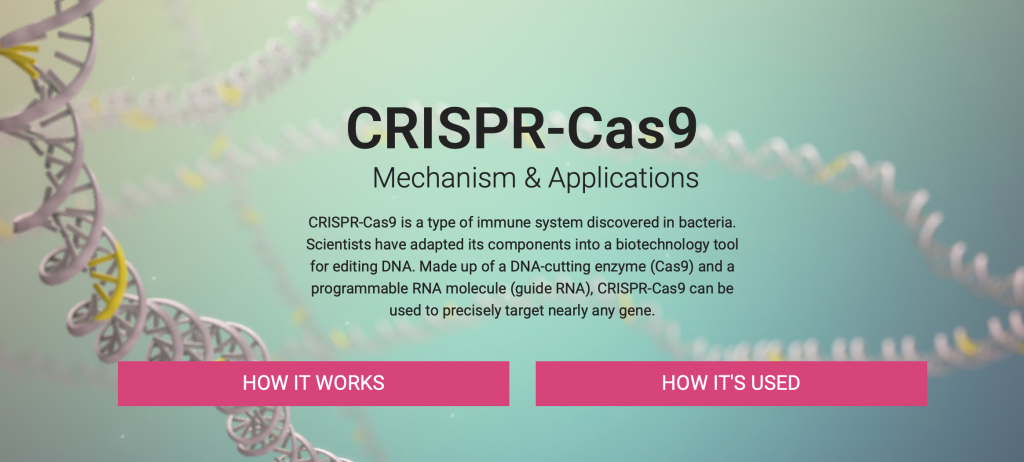
Lab #13:
Part 1:
The Body Economy – Biotech challenges
What are the ethical challenges of monetorizing care?
Part 2:
Ethical Issues
The Issue of Tissue_What fertilization looks like


